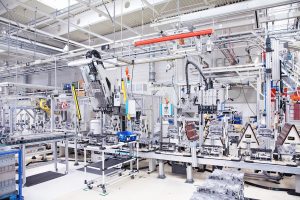TXM Lean Solutions Tip – Couple Manufacturing processes
Traditional improvement programs focus on optimising individual pieces of equipment. Anyone with a new machine will understands the accountants desire to get it working to its maximum efficiency. However, a key principle of Lean Manufacturing is understanding customer requirements and how these flow through the factory in “value streams”. To optimise the flow of parts we need to consider how we couple (join) our manufacturing processes to create this flow.
There are three main ways we connect processes;
1. Creating small cells where small batches of parts are all connected and parts flow in their manufacturing sequence from one machine to the next. The cell would consist on all the machine and process where practical to make the completed item. The team is responsible for quality and output, and have been crossed trained to operate all functions within the cell . A key skill is the team’s ability to solve their own problems as they occur.
2. Where processes are not practical to be included in the cell (flow), a connection is needed to signal when the upstream process is ready to accept more parts. We use a kanban process to tie these areas together. A kanban may be a physical container which clearly shows how many parts are needed, as well as the information of where the parts come from and where they are returned to. If it is not practical to use containers, trolleys or racking, a tag or card system can be used.
3. To couple processes with very different efficiencies, running times or demands, a supermarket is needed to store a set amount of parts. When these parts have been used, or “pulled” by the upstream process and a minimum, preset level has been reached, the signal is returned to the manufacturing process, letting them know more parts are needed.
In manufacturing the traditional approach has been to create work cell based on machine type, for example to have raw material cutting, milling, turning and grinding sections. Large processes such as heat treatment or power coating may not be included into the cell. These maybe sub contracted processes, depending on the size of your company, and would fall under a Kanban control. Creating cells around product families is a good place to start by bring the different machines closer together so that the parts can flow from one machine to the next.
The final level of this type of lean thinking is the automated work cell where robots work to pass items between machines in order to create a completed part with no break in the production flow (think of an Engine assembly line).
HTML Credit Code for Can Stock Photo–>
<a href=”http://www.canstockphoto.com”>(c) Can Stock Photo</a>






